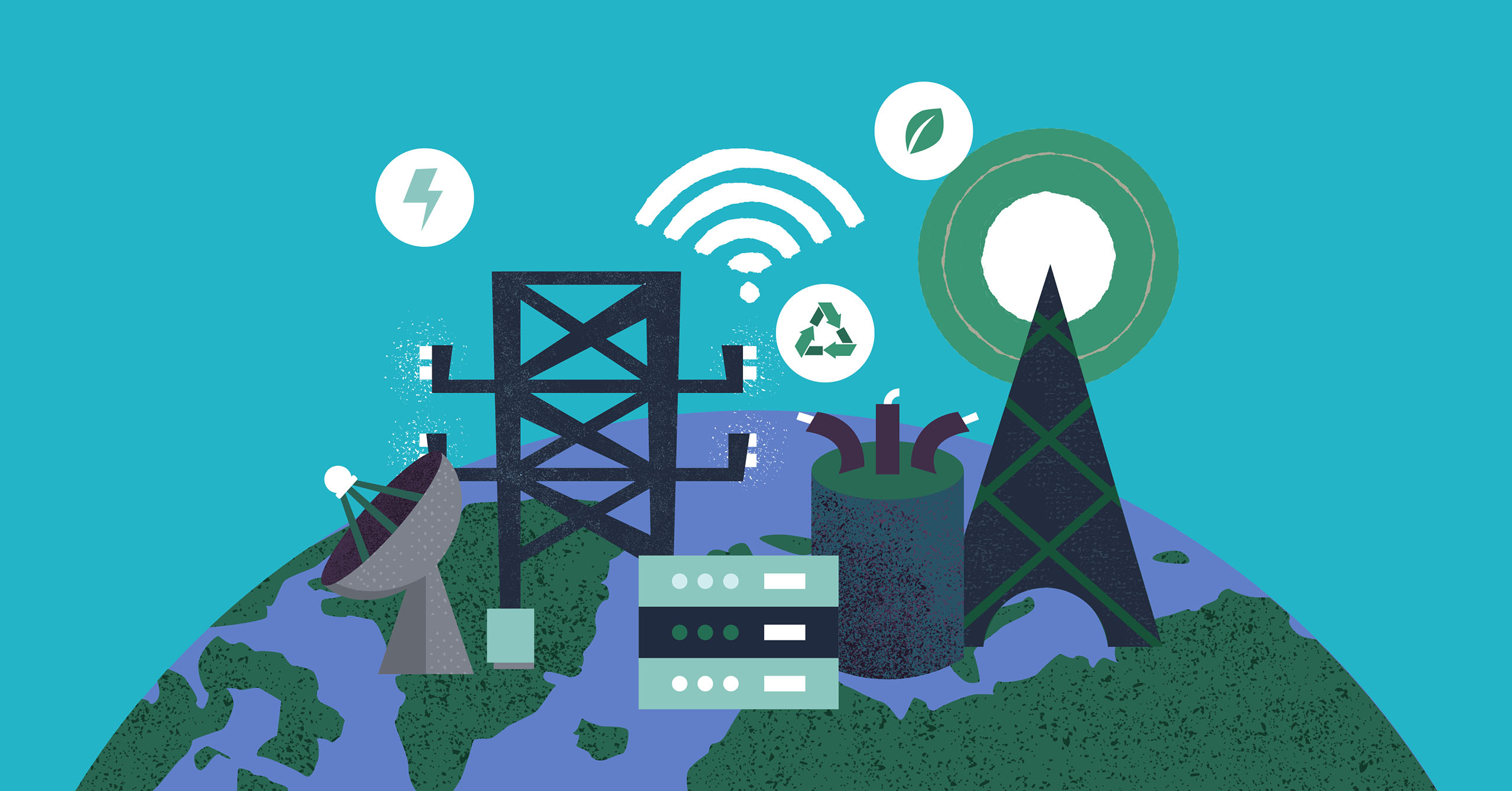Ask TBM: How Can PH Data Centers Incorporate Sustainability?

The Philippines still lacks the technology, regulations, and strict practice of sustainability measures to ensure that growth of data centers will not harm the environment.
Green advocates constantly emphasize that nothing is more important than the environment and sustainability, as any economic or industry growth, or political debate, becomes futile without a planet to speak of. Amid the encouraging growth in the country’s data centers, there is growing concern about how ready the Philippines is in reducing the environmental harm that comes with it.
With the Philippine data industry projected to grow close to six times its current capacity at $1.61 billion in just five years, the local industry has still not fully embraced sustainability measures that would put it at par with global standards.
The Business Manual spoke with Vitaly Berezka, Regional Spokesperson of Vienna based construction, facility management and real estate digital platform PlanRadar, to learn what the Philippines can adapt from Singapore’s model of combining growth with digital sustainability.

What is your assessment of the Philippine data industry’s sustainable practices and awareness?
The future data center capacity in the Philippines is expected to surpass 400 megawatts (MW) when fully built, almost six times the country’s current capacity. The Philippines is rapidly becoming a key player in the Southeast Asian data center market, with a projected market size of $1.61 billion by 2029, and a growth rate exceeding 13% annually.
We are observing that the Philippines data industry is at a pivotal stage where sustainable practices are increasingly becoming a focus, but there is still significant room for improvement. While there is growing awareness of the need for sustainability, the industry has yet to fully embrace the comprehensive measures necessary to minimize its environmental impact. The adoption of energy-efficient technologies and sustainable building practices is still in its early stages, with only a few data centers actively pursuing green certifications or integrating renewable energy sources into their operations.
There is a clear opportunity for the Philippines’ data infrastructure to enhance its sustainability efforts by learning from global best practices and implementing more robust environmental strategies. This could include greater investment in renewable energy, energy-efficient infrastructure, and the adoption of green building certifications. As awareness continues to grow, coupled with increasing pressure from global clients and partners, the industry is likely to see more significant advancements in sustainability. However, this will require strong leadership, targeted incentives, and a commitment to integrating sustainability into all aspects of data center operations.
How has Singapore been able to reduce the environmental impact of data centers? How does the government check and ensure sustainable practices are adopted in their construction and operations?
Earlier this year, we saw Singapore announce an investment of close to S$300 million into Singapore’s National Quantum Strategy (NQS) to advance Singapore’s growing Quantum industry, along with the Green Data Centre (DC) Roadmap to guide digital sustainability and chart green growth pathways. Cushman & Wakefield’s 2024 Global Data Center Market Comparison report indicates that Singapore currently ranks 6th globally for data centres in established markets. Singapore is set to become Asia Pacific’s next 1-gigawatt (GW) city market, following Tokyo. It has the lowest colocation vacancy rate in the region at 1%, indicating that demand for data infrastructure is rapidly exceeding supply.
Singapore’s approach to reducing the environmental impact of data centers hinges on a combination of rigorous regulatory frameworks and active promotion of green building practices. The government’s Green Mark certification is central to this strategy, requiring data centers to adhere to high standards in energy efficiency, water usage, and environmental impact. This certification process ensures that new data centers are designed and built with sustainability at their core.
To ensure these practices are not just theoretical, the Singapore government enforces compliance through regular monitoring and reporting. This includes energy audits and assessments to verify that operational practices align with sustainability goals. Additionally, Singapore encourages the adoption of innovative technologies, such as advanced cooling systems and renewable energy integration, to further reduce the carbon footprint of these facilities. The government’s commitment to sustainability is evident in its ongoing support for research and development in this sector, which drives continuous improvement in data center design and operations.
What are the environmental threats posed by the growth in data centers?
Data centers, while essential to the digital economy, can pose several environmental risks that need careful management. One of the primary concerns is their high energy demand. As more data centers are built to meet the growing need for digital services, the strain on energy resources increases, often resulting in higher carbon emissions if the energy is sourced from fossil fuels. This makes data centers significant contributors to global warming unless renewable energy sources are adopted.
Another environmental threat is the heat generated by data centers, which requires intensive cooling processes. These cooling systems not only consume large amounts of energy but also water, particularly in regions that rely on water-based cooling methods. The use of large quantities of water can exacerbate local water scarcity issues, especially in drought-prone areas. The physical expansion of data centers also requires considerable land use, which can disrupt local ecosystems and lead to the loss of natural habitats.
In what ways can technology help reduce environmental impact?
The integration of technology in the built environment can significantly mitigate its environmental impact by promoting sustainable energy use and reducing waste. One of the most impactful applications is in energy management systems, which utilize sensors and automation to optimize energy consumption in real-time, reducing the overall energy footprint of buildings. Additionally, renewable energy technologies, such as solar panels and wind turbines, can be seamlessly integrated into building designs, reducing reliance on fossil fuels and lowering carbon emissions.
Technology also enhances the sustainability of the construction process itself. Through the use of digital twins and advanced simulation tools, construction projects can be planned and executed with greater precision, minimizing material waste and environmental disruption. Furthermore, technologies such as 3D printing and robotic construction are beginning to play a role in creating structures with less material waste and a smaller carbon footprint. These technologies are essential for creating a more sustainable built environment as the construction industry moves towards greener practices.
How do you do the life cycle assessment of buildings? How can you make these buildings more green?
Life cycle assessment (LCA) of buildings is conducted by evaluating the environmental impacts associated with every stage of a building’s life, from material extraction and manufacturing to construction, operation, and eventual demolition or recycling. This process involves analyzing the energy and resources consumed, as well as the emissions and waste generated throughout the building’s life. By taking into account the entire life cycle, LCA provides a detailed picture of the building’s environmental footprint, highlighting the stages where the most significant impacts occur and where improvements can be made.
Construction and facility management companies can make buildings greener by applying the insights gained from LCA to each phase of the building’s life cycle. For example, they can select low-impact materials during construction and incorporate energy-saving technologies that reduce operational energy use. Facility management can further contribute by adopting energy-efficient practices, such as using smart building technologies to optimize heating, cooling, and lighting systems. Finally, at the end of the building’s life, companies can focus on recycling and repurposing materials to minimize waste, thereby closing the loop and reducing the overall environmental impact.
What are the other measures companies in general can observe to make their business more sustainable?
One of the key measures that construction companies can observe to enhance sustainability is to focus on reducing their carbon footprint. This can be achieved by transitioning to renewable energy sources for their operations, optimizing energy efficiency in their facilities, and encouraging hybrid work to reduce the need for commuting. Additionally, companies can invest in carbon offset programs to neutralize the emissions they cannot eliminate, contributing to global efforts to combat climate change.
Another important aspect is sustainable resource management. Companies can reduce their environmental impact by implementing circular economy practices, such as reusing materials, recycling waste, and reducing packaging. Moreover, by adopting sustainable supply chain practices, businesses can ensure that their products and services are produced and delivered with minimal environmental impact. This includes choosing suppliers who prioritize sustainability, reducing transportation emissions, and promoting the use of sustainable materials throughout the supply chain. By focusing on these areas, companies can make substantial strides toward more sustainable operations.



